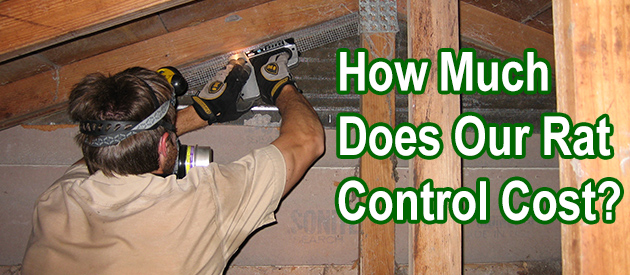San Diego County, San Diego Rat Control Situation:
Hi David, Is a UV blacklight still useful, exterior-wise, if it rains after the rodents leave their urine stains? I am in the process of performing exterior maintenance to better exclude my roof rats. 1) I have a 25 year old cedar shake roof in San Diego California with openings under each shake along the rake edge of the roof at the gable ends of my house. There's no drip edge, i.e. under the shakes I have roofing paper (now somewhat curled) that runs more or less up to and rests right atop the fascia board. Because I have skip sheathing, and since the cross section of a shake is a wedge that is up to one inch at the upper, thick end, this appears to create many huge entry points along the rake edges even though the sheathing is rabbeted into the fascia board. As a result, I'm thinking of getting a UV blacklight to use outside the house to sleuth for urine stains along the upper edge of the gable end shakes and fascia boards. My question is, how easily does the winter rain wash away the urine, rendering this a pointless exercise? 2) I noticed a new product called "rat-out gel" and was thinking of applying it along the rake edges mentioned above. Or, maybe I should just buy many rolls of X-Clude and use that instead. Or maybe both. Any comment? Thanks very much for your website, Doug
My response: First off, I do not have experience using UV lights to detect rat urine. But I do suspect that rain will severely limit the effectiveness of this approach. I have never heard of Rat-Out Gel or XClude, but I typically stick to physical barriers rather than repellent type devices. If your roof makes this impossible, you might have a tough time keeping the rats out.
San Diego Rat Control Tip of The Week
Do Rats Feel Pain?
Rats are one of the few animals with a developed brain and a sense of empathy. When handled with care, they can be playful and tickled. But when handled without compassion or roughly, they showcase a high level of anxiety and express their pain in a special kind of way. This clearly shows that just like every other animal, rats also feel pain.
When it comes to expression, rats express their pain in a special kind of way. They do this by slightly changing their facial appearance and making a grin that clearly shows that they are in discomfort. Apart from this, rats also show that they are in pain by narrowing their eyes, puffing out their cheeks, flattening their ears, and rhythmically increasing the size of their nose.
If you want to know if a rat is in pain or not, you will have to pay attention to its facial expressions. Since they are inaudible animals, waiting to hear them make excruciating sounds is a no-brainer. But with visual clues shared above, you will be able to know when a rat is in pain and when it is not.
Rats are sensible animals with a high level of empathy. Another way you can know when a rat is in pain without actually studying its facial expressions is when you see another rat showing concern for the isolated rat. This behavior in rats is also exhibited when one rat is wounded or ill. In situations like this, other rats will come around the indisposed rat to show their concern.
Having shared this, you can be certain that rats also feel pain. Therefore, if you notice any rat around exhibiting any of the signs above, the rat may be hurt or ill. Also, you need to understand the fact that rats are major carriers of diseases, hence you should avoid having direct contact with them.


